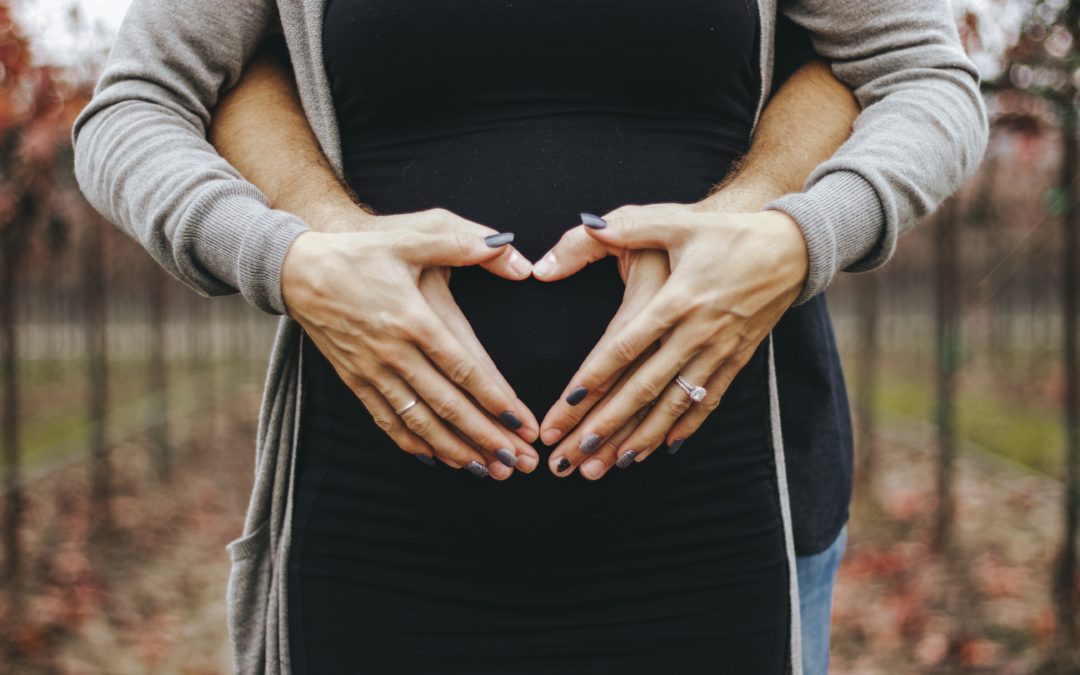If you want to support your partner during the birth of your baby, it will be important to have a basic understanding of what is going on
This is a quick overview of the basics which every dad-to-be will find invaluable to know about labour and birth, including your way around some of the essential terminology!
The ABC of labour
What is labour? Labour basically means the body working to give birth – first to birth baby, and then to birth the placenta.
The essential part of the body which is responsible for birthing is the uterus. This is the place where your baby spends 9 months growing and developing. It is an incredible organ which grows over 1000 times in size from the beginning to the end of pregnancy and is covered in incredibly powerful muscles. Contractions are the movements of these muscles as the uterus works.
At the bottom of the uterus is the cervix. This is closed during pregnancy to keep baby in and infection out. During labour, the cervix will gradually open.
The hormone which gets labour going and keeps it progressing is called Oxytocin (pronounced Oxy – toe – sin), so basically you want as much Oxytocin produced as possible during labour! Oxytocin likes quiet, dark, safe and private environments.
The other hormone you need to know about is Adrenalin. Adrenalin is caused by fear, anxiety, fatigue and feeling uncomfortable or being watched. Adrenalin neutralises Oxytocin, therefore if it is produced in labour, can stall it, stop it and even make it a more painful experience.
When might labour begin?
At your dating scan (usually around 11-14 weeks) you will be given an Estimated Due Date (EDD). Antenatal Scans: what are they? This is determined by a set of measurements taken at the 12 week scan. Due Dates are notoriously inaccurate, as only 5% of babies are actually born on theirs!
In fact, normal term of pregnancy is between 37 – 42 weeks so, with this mind, it is helpful to not focus on a single date, but to think about how it would be perfectly normal for the birth to be any time in that few weeks. This also means the pregnancy is not technically overdue until you reach 42 weeks.
What happens in labour?
- Labour is medically defined in three parts:
- First stage – where the uterus works to open the cervix
- Second stage – where the uterus works to birth the baby
- Third stage – where the uterus works to birth the placenta.
It is impossible to say how long each part takes, as it is different for every birth.
The First Stage
Just to complicate things a little (as it was all so straightforward up until point!)- the first stage of labour medically is split into two separate stages: pre labour and active labour.
Pre Labour
At this point, the cervix will be dilating (opening) up to about 4 centimetres (by the time your partner is ready to give birth, it will have opened to around 10cm). Mum is likely to be experiencing contractions and may even be finding them challenging, however, medically this part of labour is called ‘pre-labour’.
Contractions are often irregular in their frequency and length, and this stage can last for several hours.
First Stage – Active Labour
Pre labour then moves to what is known as ‘active labour’ when the cervix has dilated to at least 4cm. Most often at this point the contractions have started to become more regular, closer together and lasting for longer. There is no way for you to examine the cervix to try to work out how far along she is (so don’t even try!), but you can monitor her contractions to help gauge how she is progressing.
What do I do when she goes into labour?
Transition
At the end of active labour some women experience ‘transition’. Not all women do, but it is helpful for you to know what to expect, in the event she does.
During transition, a surge of adrenalin that floods Mum’s body. This is all part of her body energising her ready for the final push and meeting your baby! However, for some women, this adrenalin surge will come with side effects which can be a bit unsettling if you or she do not realise what they are. These symptoms can be physical or emotional.
Physically, all that adrenalin can lead to Mum having the shakes – jiggling legs or shivering is common. She might suddenly start feeling nauseous or vomit.
Emotionally, all of that adrenalin can also send Mum into an emotional fight or flight, and is also often known as the ‘self-doubt phase’. Even the calmest woman at this point may start suddenly saying ‘I can’t do it’ or ‘I want a caesarean’ or even try to leave the room!
The Second Stage – Giving birth to your baby
During the second stage, the cervix has fully opened and contractions are now taking place to ease the baby out of the uterus and into your arms.
Some positions will make the birth easier and some will make it more difficult. Despite what you see on TV, if your partner is giving birth lying on her back, it is going to make the process more difficult, as it restricts space in the pelvis and also means she is almost birthing against gravity. There is also an increased risk of perineal damage in this position (i.e. tearing of the skin around the vaginal opening), so for your partners own comfort during and after the birth, this is one to avoid if possible.
Positions which can make this second stage a little easier for your partner include kneeling or on all fours.
The Third Stage – Birthing the Placenta
The placenta is an organ which grew during pregnancy specifically to nourish your baby. Now that the pregnancy has finished, the job of the placenta is done, so the body will expel it. This is the third stage of labour, and if all has been straight forward with the birth parents will have a choice as to whether they birth the placenta naturally, or medically.
Birthing it naturally means waiting for the body to start contractions again and then to expel the placenta, sometimes this happens very quickly, literally within minutes of the birth of the baby. Sometimes however it can take longer, although staying warm, not clamping the cord at all and allowing baby to try and breastfeed will help.
Birthing the placenta medically means your partner receiving an injection in her thigh to stimulate contractions quickly. The benefits are that there is less likely to be bleeding immediately after the birth, but there is an increased risk of remnants being left behind in the uterus. As with any injections, there is always the risk of mum having an adverse reaction. If mum has had a long or difficult labour, a medically managed third stage may be recommended because of the increased risk of heavy bleeding following the birth.
Birth preparation
So there are your basics… now it’s up to you how to focus on your specific role in birth and how you can make this journey even easier, so keep reading to find out lots more, including:
What do I do when she goes into labour?
What goes on at antenatal classes?








